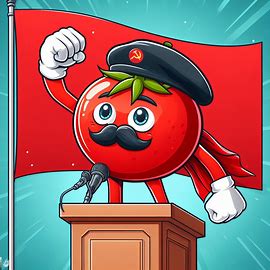I see this claim made a lot: that the Soviet Union achieved economic growth that has never been seen before or after, so threw it at some angry Redditor. They brought up Japan/ South Korea from 1950-1990 and looking into it, it seems as though they are comparable, at least when using GDP South Korea actually does a lot better than the Soviet Union. Now this leaves out rapid Industrialization which I assume is what is meant with “unparraleled economic growth” and also GDP may not be the best indicator but it’s still impressive. Of course Japan and SK were also subsidized by the US. Am I missing something? and does anyone have good sources on the growth of the Soviet Economy from 1921-1990?
This neo-liberal establishment would have us believe that, during its miracle years between the 1960s and the 1980s, Korea pursued a neo-liberal economic development strategy …
The reality, however, was very different indeed. What Korea actually did during these decades was to nurture certain new industries, selected by the government in consultation with the private sector, through tariff protection, subsidies and other forms of government support (e.g., overseas marketing information services provided by the state export agency) until they ‘grew up’ enough to withstand international competition. The government owned all the banks, so it could direct the life blood of business-credit …
The Korean government also had absolute control over scarce foreign ex- change (violation of foreign exchange controls could be punished with the death penalty). When combined with a carefully designed list of priorities in the use of foreign exchange, it ensured that hard-earned foreign currencies were used for importing vital machinery and industrial inputs. The Korean government heavily controlled foreign investment as well, welcoming it with open arms in certain sectors while shutting it out completely in others, according to the evolving national development plan …
The popular impression of Korea as a free-trade economy was created by its export success. But export success does not require free trade, as Japan and China have also shown. Korean exports in the earlier period – things like simple garments and cheap electronics-were all means to earn the hard currencies needed to pay for the advanced technologies and expensive machines that were necessary for the new, more difficult industries, which were protected through tariffs and subsidies. At the same time, tariff protection and subsidies were not there to shield industries from international competition forever, but to give them the time to absorb new technologies and establish new organizational capabilities until they could compete in the world market.
The Korean economic miracle was the result of a clever and pragmatic mixture of market incentives and state direction.
https://libgen.is/book/index.php?md5=CFFF2BEABC3F84C6C5D7EFE777A08C36
Also look what IMF/World Bank did to South Korea during 1997 Crisis. Japan meanwhile had a ‘lost decade’. The USSR and other socialist states industrialized without much involvement of foreign sector, their growth was from the Government sector. In fact, the U.S. prevented them from engaging in foreign trade with the developed countries (who had advanced technology and high income). It is (part of) the reason why Russia, despite falling off post-1991 is withstanding Western sanctions.
You are mistaken, at least partially.
The unprecedented growth of the USSR economy occurred under Stalin’s Five Year Plans from 1929-55, at 13.8% (minus 1941-45 during the war, which registered a minus 3.7%) over a 20 year period.
The numbers were calculated using gross national income from the Soviet archive as GDP was not calculated (at least not in the same way) during the Soviet times. Check out the Russian economics book “Crystal Growth” for more details.
For comparison with the other periods in the USSR and Russia:
The growth during the Tsarist Russian empire were 2.8% (1885-1906) and 5.2% (1908-13) respectively.
The NEP period (1921-28) also registered a high growth of 12.7%, but it was largely due to the recovery from an extremely low base that followed directly from the Civil War, and began to peter out near the end of the NEP period. From 1921-26, growth was 14.8% but it fell to 6.7% in 1927-28. (Note: WWI and the Civil War from 1914-20 saw a decline of -11.7%)
Stalin’s Five Year Plans were the true sustained economic growth model, which registered at 14.5% (1929-40) and then immediately after the war at 13.0% (1946-55).
Unfortunately, Khrushchev screwed up and the growth of the rest for the Soviet periods were pitiful:
7.8% from 1956-65;
5.3% from 1966-85;
0.3% from 1986-91.Post-USSR period under Yeltsin saw a rapid decline: -12.0% (1992-94) and then -2.9% (1995-98).
Putin’s recovery were modest at best: 6.9% (1999-2008) then 1.0% (2009-19).
Note that post-1991 figures were calculated using GDP instead of gross national income (GNI), but the differences never exceeded more than 3%, so the comparison is still largely valid.
For comparison with other countries over a 20-year period:
USSR - 13.8% (1929-55) over 22 years (minus 1941-45)
Taiwan - 11.5% (1947-73) over 27 years
China - 10.4% (1983-2007) over 25 years
South Korea - 10.2% (1966-88) over 23 years
Japan - 9.7% (1966-89) over 24 yearsNote that the difference between the USSR and Taiwan/China/South Korea is vast when you take into account the compound growth over 20+ years.
Note also that South Korea copied the Soviet Five Year Plans, among other things, to initiate its rapid economic growth model during the 1960s.
You should be more careful with comparing GDP numbers. For instance, GDP numbers suggest that Russia’s economy pretty much halved after 2014 due to sanctions, but most of this “loss” was simply the ruble’s price dropping. Russia’s industry did not collapse after 2014 like it did in 1991.
I’m not close to being an expert on the topic but comparing Soviet Union to fucking South Korea is ridiculous. That’s comparing an elephant to a peanut.
Even if the GDP numbers are higher, the sheer scale of growth and industrialization isn’t comparable. And this is Soviet Union on the eve of the Second World War, fresh from WW1 and a few civil wars—not to mention being surrounded by an entire planet of capitalist enemies. South Korea, as you mentioned, was highly financially and militarily supported by US. South Korea also still has high economic inequality and other social issues that are endemic to developed, neoliberal capitalist nations, so it’s not as if they even succeeded in economically uplifting probably even the same percentage of the population as did USSR, not to mention actual numbers. Who cares if GDP increased so highly but all of that wealth just went into a capitalist’s pocket instead of furthering more growth among the nation itself?
I don’t know if they can boast higher GDP than the USSR but that doesn’t tell the whole story by a long shot.
November 29, 1941: “How can such a primitive people manage such technical achievements in such a short time?”
August 26, 1942: “With regard to Russia, it is incontestable that Stalin has raised living standards. The Russian people were not being starved [at the time of the start of Operation Barbarossa]. Overall, we must recognize that: work- shops of the scale of the Hermann Goering Werke have been built where two years ago there were only unknown villages. We are discovering railway lines that are not on the maps.”
Both quotes from Hitler. As others mentioned, pre-WW2 the USSR grew at an unprecedented rate. This is the period that Stalin is heavily criticized for “heavy hand”, industrialization was forced because it was either that or death, the USSR was at an state of emergency and the people needed to rise up to the challenge and catch up with the already industrialized nations. Needless to say that the following USSR leaders rested on the laurels of the work done by the people under Stalin era.
Also another point is that this growth was without exploiting other nations, something that the west cannot do.





